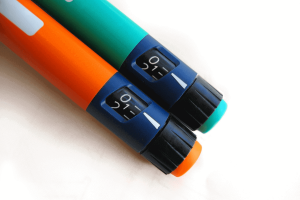How to control diabetes in the heat
Sunny skies, popping fireworks, fresh-cut grass, and the smell of a fired-up grill are all signs summertime is here. But with the season’s good times also come climbing temperatures and muggy, humid afternoons. When ignored, these hot weather changes can bring health care hazards to everyone, especially people with diabetes. Whether you’re gardening in the front yard or making a day-trip to an amusement park, these tips will help you beat the heat so you can relax and enjoy the summer fun.
1. Defeat dehydration
Everyone, no matter how old, young, or healthy, runs the risk of losing too much fluid in the heat. Diabetes adds a few extra concerns. In addition to sweating, people with diabetes also lose body fluids through frequent urination when blood sugar levels run too high. Some diabetes drugs, such as Metformin, also increase a person’s risk of becoming dehydrated.
How to beat it: Make sure to drink plenty of fluids throughout the day. The United States Department of Labor recommends people drink four cups of cool, clear fluids for every hour spent moving in the heat. Sports drinks are great for replacing nutrients lost through sweat, but they can pack a sugary punch. When it comes to rehydrating during time in the sun, water is often your best bet. To help prevent excess sweating, wear loose-fitting, light-colored clothing. Cotton, rayon, and linen are all good fabric choices.
2. Manage your medications
Did you know heat can affect your diabetes medications and testing supplies? According to the Mayo Clinic, heat can cause insulin to harden, which prevents the drug from working properly. Glucose meters may also malfunction when placed in extreme temperatures.
How to beat it: The Mayo Clinic recommends storing meds in an environment no warmer than 86 degrees F or at the temperature recommended by the manufacturer. Avoid keeping glucose meters in warm areas such as hot cars or near sunny windows. If you use an insulin pump, the Mayo Clinic suggests checking it every hour you spend outside. The Joslin Diabetes Center recommends checking your blood glucose at least four times each day.
3. Watch your workout
If you’re someone who enjoys a 2 p.m. sweat session, you may want to hold off during the steamy summer months. According to the Joslin Diabetes Center, exercising during the hottest parts of the day can make you more prone to dehydration and heat-related illness.
How to beat it: Try rescheduling your workout to the morning or evening, when the temperatures are lower and the sun isn’t as bright. Light activity, such as walking, is a great way to stay active without pushing your body too hard. If you must exercise in the afternoon, try working out in a cool, air-conditioned environment, such as a gym or your local community center.
4. Know the signs of an emergency
Heat exhaustion and heatstroke are two of the most common weather-related emergencies that happen throughout the summer. Heat exhaustion occurs when your body gets overheated, often caused by too much activity in a hot environment. Without prompt treatment, heat exhaustion can lead to heatstroke, a life-threatening condition.
How to beat it: Symptoms of heat exhaustion include confusion, fainting, pale skin, rapid pulse, and muscle cramps. If you or a loved one experience any of these symptoms, stop what you’re doing immediately and head to a cool environment. Make sure the person drinks plenty of cool fluids and removes any hot or restrictive clothing. Cool showers and ice packs will also help. If symptoms persist, seek medical attention immediately.
Photo courtesy of Christian Haugen on Flickr




